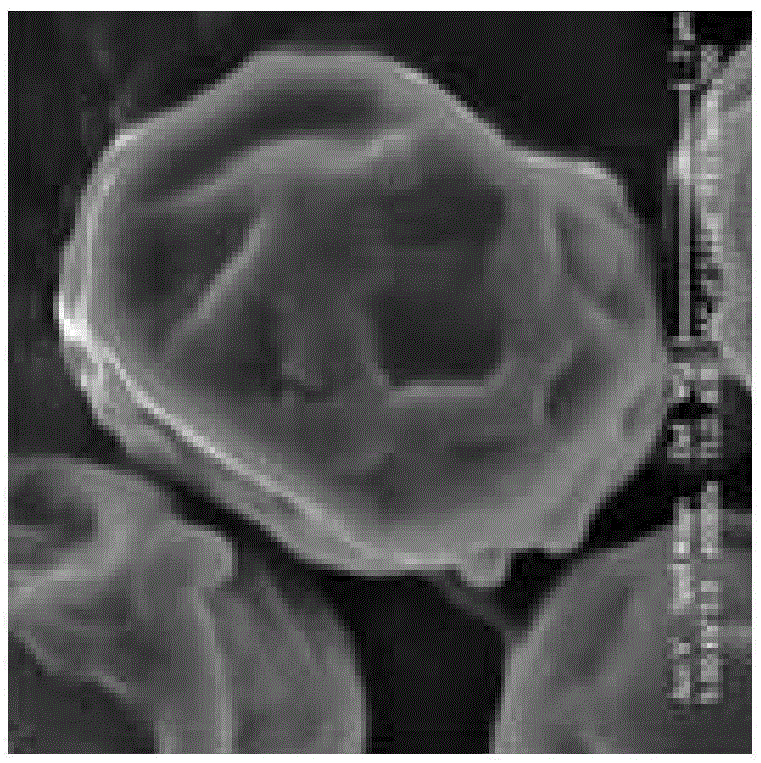A freshwater alga chlorella sorokiniana HN01 and its application
A technology of CCTCCM2013608 and algae strains, applied in the field of biomass energy, can solve problems such as difficult large-scale high-density cultivation, high energy consumption costs in the processing process, and water source pollution, so as to ensure high-density, high-quality fermentation and enhance international competitiveness. Effect
- Summary
- Abstract
- Description
- Claims
- Application Information
AI Technical Summary
Problems solved by technology
Method used
Image
Examples
Embodiment 1
[0059] Under aseptic conditions, single algae were picked from a solid plate and dropped into a 100ml Erlenmeyer flask containing 30ml of sterile BG-11 culture solution, and cultured in a light culture rack. The temperature was 28°C, the light intensity was 7500lux, and the light-to-dark ratio was 12: 12. The culture time is 12 days, and the microalgae seed liquid is obtained by growing to the end of the index.
[0060] 500 mL of BG-11 medium was prepared, and the inoculum of 15 v / v % was inserted into the expanded cultured microalgae seed solution. The initial pH is 4.0, the temperature is 28°C, the light-dark ratio is 12:12 (day: night), the light intensity is 15000lux, the amount of glucose added is 2g / L, and the sterile air of 0.2vvm is passed through, and cultivated for 14 days.
[0061] The algal cells were collected by centrifugation, dried in a vacuum freeze dryer, and the algal powder was weighed and the dry weight was calculated. The biomass concentration of the alg...
Embodiment 2
[0063] Under sterile conditions, single algae were picked from a solid plate and dropped into a 100ml Erlenmeyer flask containing 30ml of sterilized culture solution, and cultured in a light culture rack. The temperature was 28°C, the light intensity was 7500lux, and the light-dark ratio was 12:12. The time is 12 days, and the seed solution is obtained after growing to the end of the index.
[0064] 500 mL of BG-11 medium was prepared, and the inoculum of 5v / v% was inserted into the expanded cell culture medium. The initial pH is 8.0, the temperature is 28°C, the light-dark ratio is 12:12 (day: night), the light intensity is 7500lux, the amount of glucose added is 15g / L, and 0.33vvm sterile air (CO 2 The content is 0.03% (v / v), cultured for 9 days.
[0065] The algal cells were collected by centrifugation, dried in a vacuum freeze dryer, and the algal powder was weighed and the dry weight was calculated. The biomass concentration of the algal powder was 6.2g / L, the biomass y...
Embodiment 3
[0067] Under sterile conditions, single algae were picked from a solid plate and dropped into a 100ml Erlenmeyer flask containing 30ml of sterilized culture solution, and cultured in a light culture rack. The temperature was 28°C, the light intensity was 7500lux, and the light-dark ratio was 12:12. The time is 12 days, grow to the end of the index and expand the culture with a 1:10 inoculation ratio.
[0068] Prepare 500mL of BG-11 medium, and insert the expanded microalgae cells. The initial pH is 11.0, the temperature is 45°C, the light-to-dark ratio is 12:12 (day:night), the light intensity is 2500lux, the amount of glucose added is 15g / L, and 0.33vvm sterile air (CO 2 The content is 0.03% (v / v), cultured for 5 days.
[0069] The algal cells were collected by centrifugation, dried in a vacuum freeze dryer, and the algal powder was weighed and the dry weight was calculated. The biomass concentration of the algal powder was 4.4g / L, the biomass yield was 0.49g / L / d, and the o...
PUM
| Property | Measurement | Unit |
|---|---|---|
| diameter | aaaaa | aaaaa |
Abstract
Description
Claims
Application Information
 Login to View More
Login to View More - R&D
- Intellectual Property
- Life Sciences
- Materials
- Tech Scout
- Unparalleled Data Quality
- Higher Quality Content
- 60% Fewer Hallucinations
Browse by: Latest US Patents, China's latest patents, Technical Efficacy Thesaurus, Application Domain, Technology Topic, Popular Technical Reports.
© 2025 PatSnap. All rights reserved.Legal|Privacy policy|Modern Slavery Act Transparency Statement|Sitemap|About US| Contact US: help@patsnap.com



